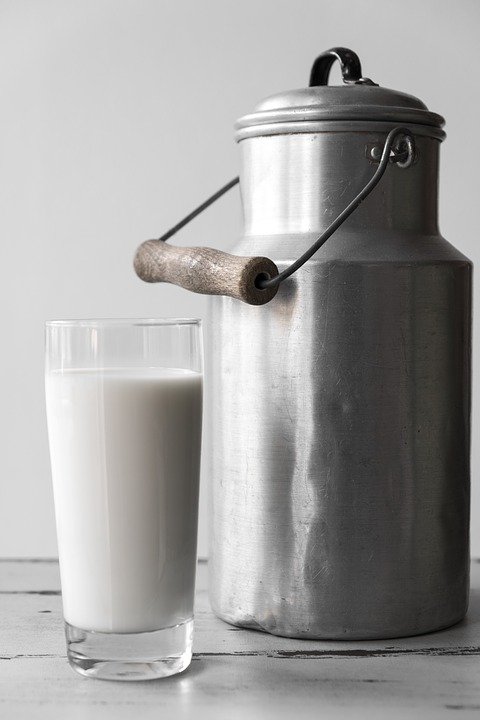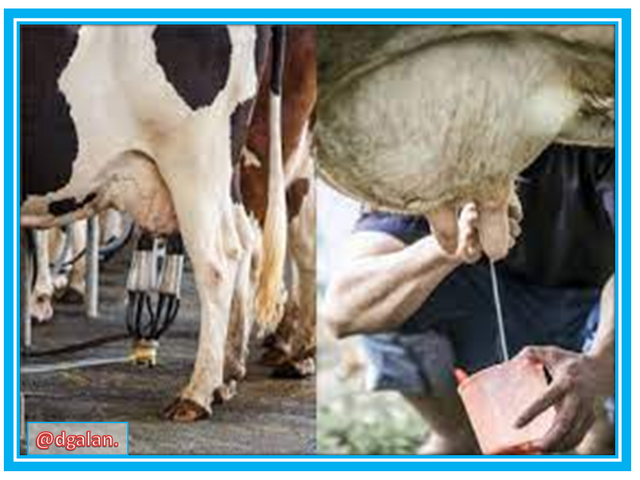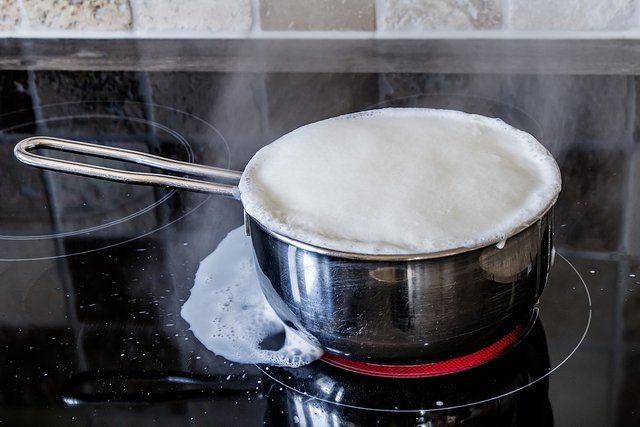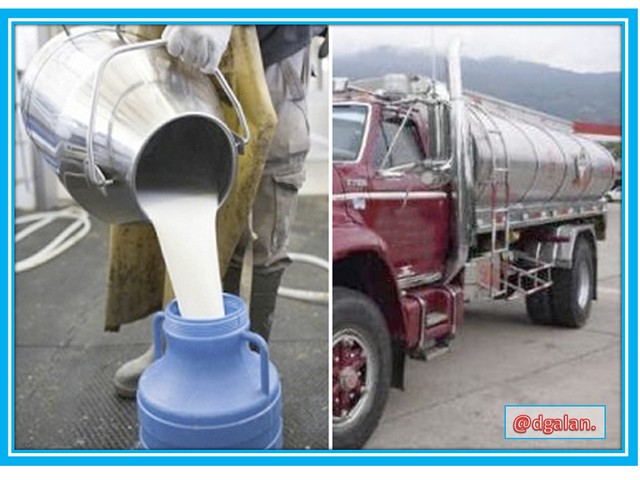Written by:Diomer Antonio Galán Rincón.
Bachelor's Degree.Public Accounting / MSc.Science of Higher Education.

Author: @dgalan,through Power Point 2010 tool, and using public domain image https://diariodelosandes.com
Introduction
Greetings dear friends of steemit and especially to the members of this prestigious community, continuing with the series of my publications today I want to share with you a publication related to the determination of factors that affect the temperature and quality of milk for its production. As well as the organoleptic characteristics of milk, important elements to take into account when consuming this important and nutritious food.
Currently, food processing industries, particularly those that process dairy products, strive to ensure that their main raw material, milk, is of excellent quality, in order to obtain safe products with pleasant organoleptic characteristics that do not cause harm or represent risks to the consumer's health
The concept of quality is closely related to the attributes and qualities that the food must meet, either to meet palatability, nutritional or safety expectations. Therefore, quality must be reflected in the chain that integrates food production, composed of the producer, the processor and the consumer.

In this context, the quality of milk as a raw material must be preserved throughout the food chain, which involves numerous factors that can cause loss of quality, such as biological, environmental, chemical and physical factors. However, one of the most important factors to consider in this work are the physical ones, being temperature the most relevant.
On the other hand, it must be kept in mind that much of the milk is produced by micro-producers, who are scattered throughout rural areas of our country, and that the vast majority of markets are located in urban areas. The logistical difficulty of linking producers with markets is made worse by the highly perishable nature of milk, which requires rapid collection and transportation.
For this reason, alternatives have been sought to have facilities near the production areas for the reception, heat treatment, refrigeration and cold storage of raw milk, as well as the control, review and inspection of the same, to certify its hygienic quality for its subsequent use.

Author: @dgalan,through Power Point 2010 tool, and using public domain image industriasbjt.com
From the moment the milk is obtained in the milking process until it reaches the collection center, it goes through many stages in which the temperature is affected. These stages form what is called the food chain. And if at any point in the chain the temperature is not adequate, we face problems such as the growth of microorganisms and the loss of the nutritional properties of the milk.
Storage, transport and heat treatment temperatures will have a direct impact on the quality of milk, since microbial growth is favored if it is not cooled quickly after it is obtained and stored cold enough during transport and processing. As a food with high nutritional value, it is prone to microbial contamination, making it less than ideal as a raw material for the food industry.

Organoleptic characteristics of milk:
* Flavor: Milk usually has a good, mild, attractive and sweet flavor. Modern procedures for obtaining and cooling milk in production units have contributed significantly to the preservation of its characteristics.
* Smell: We can mention that when the milk is freshly milked (fresh) almost no characteristic odor is perceived, but if we do not pay attention to it, it can quickly and easily acquire the aroma of the containers in which it is deposited for safekeeping, giving it a small acidification of special stable odor, as well as certain contaminants.
* Color: : The fresh milk acquires a white color aporcelanada, when it is very high in fat concentration presents a cream coloration. But when the milk is skimmed or very low in fat content, it presents a white color with a slight bluish tone.

Image taken from:Pixabay
Elements that contribute to affect the quality of milk:
Milk quality is affected by various factors such as the physicochemical composition and microbiological quality of the milk. These factors include environment (climate, temperature, humidity, among others), lactation status, genetics and nutrition.
Milk quality:
Quality milk is a prerequisite for the achievement of excellent dairy products. The cowshed is the first place that conditions this process. The risks of changes in milk quality are found at two levels: Those found before milking that condition the original quality of the milk. Among these we can associate the diseases that affect the herd and directly or indirectly modify the quality of the milk, the physiological state of each individual animal (colostrum and milk produced by cows with very advanced lactation) and the use of chemical substances (medicines, hormones, among others) that can pass into the milk.
And secondly, those after the milking process that can cause a degradation or alteration of the original quality. This can be related to the different and varied handling conditions during milking, to the environment, to the conservation in the cowshed and to its transfer to the industry.
center>
Author: @dgalan,through Power Point 2010 tool, and using public domain image contextoganadero.com
Conclusion:
To ensure the quality of the products, milk should be monitored from its place of production, to know the temperature conditions at which it leaves the producer, at which it enters the tanker truck and at which it arrives at the receiving plant, since this directly influences its quality conditions.
The relationship between time and temperature has an important and very important relevance for the preservation of fresh milk, for this reason, the cold chain is essential and indispensable to prevent the multiplication of different pathogenic microorganisms in milk and cause health risks to consumers.
I hope you like my article and I would appreciate all your comments
Bibliographic References:

@tipu curate
Downvoting a post can decrease pending rewards and make it less visible. Common reasons:
Submit
Upvoted 👌 (Mana: 4/5) Get profit votes with @tipU :)
Downvoting a post can decrease pending rewards and make it less visible. Common reasons:
Submit
thank you very much for your support
Downvoting a post can decrease pending rewards and make it less visible. Common reasons:
Submit
Greetings @dgalan,
Solid publication on factors affecting milk temperature and quality good job
THANK YOU FOR SHARING, KEEP POSTING : )
#affable
Downvoting a post can decrease pending rewards and make it less visible. Common reasons:
Submit
Greetings@winy
Thank you very much for your comments and for reading my post.
Downvoting a post can decrease pending rewards and make it less visible. Common reasons:
Submit